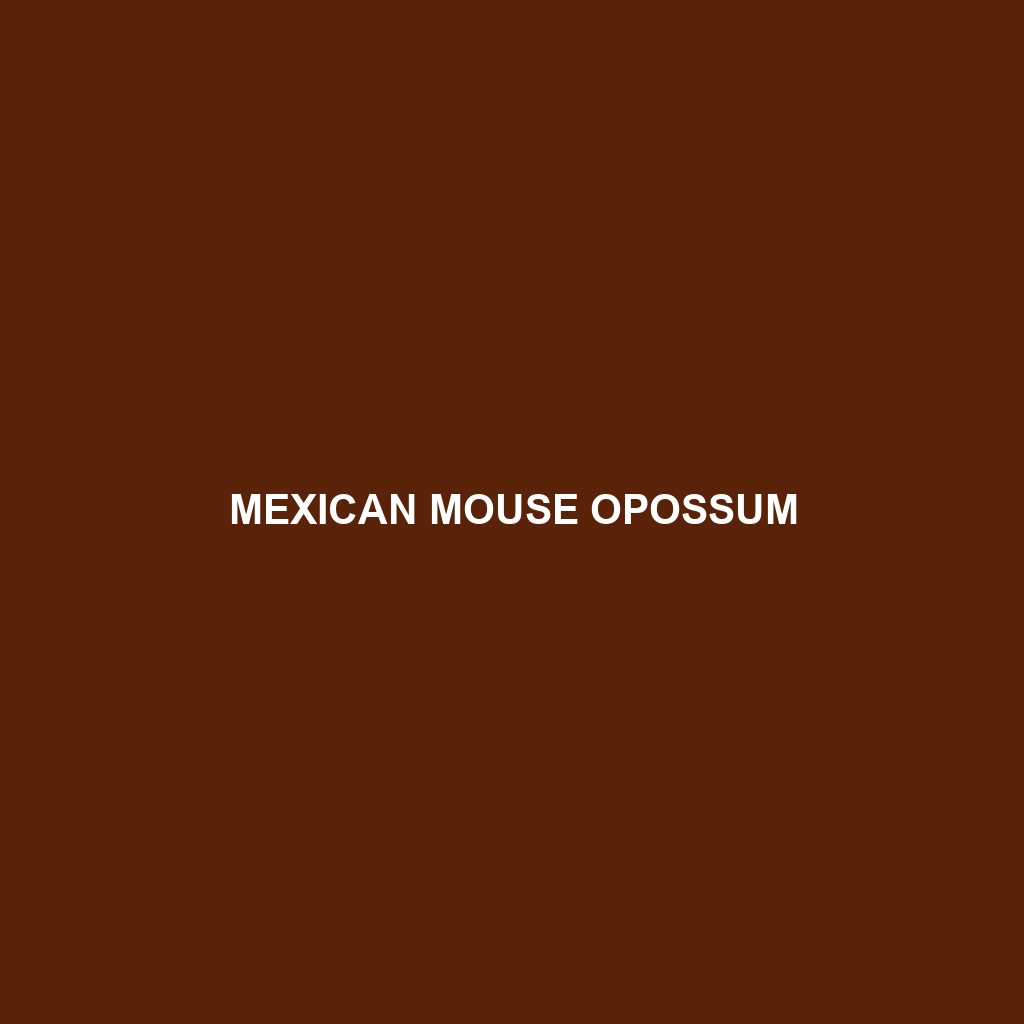Mexican Mouse Opossum (Marmosa mexicana)
The Mexican Mouse Opossum (Marmosa mexicana) is a small, nocturnal marsupial native to Central America, known for its sleek appearance and nimble nature. As a member of the Didelphidae family, this tiny creature plays a vital role in its ecosystem, particularly in seed dispersal and insect control. Despite its name, this opossum is more closely related to kangaroos than to mice.
Physical Characteristics
Size: The Mexican Mouse Opossum is diminutive, with a body length ranging from 10 to 14 centimeters (4 to 6 inches) and a tail that can be nearly as long as its body, measuring between 9 to 13 centimeters (3.5 to 5 inches).
Weight: They typically weigh between 20 to 40 grams (0.7 to 1.4 ounces).
Coloration: Their fur is generally a soft, brownish-gray on the dorsal side, with a lighter, creamy or whitish coloration on the ventral side. Their prehensile tails are often bicolored, darker on top and lighter underneath.
Special Features: They have large, rounded ears and protruding eyes that are adapted for their nocturnal lifestyle, providing excellent night vision. Their prehensile tail is a remarkable adaptation, allowing them to grasp branches and navigate the forest canopy adeptly.
Behaviors
Social Interactions: Mexican Mouse Opossums are generally solitary animals, coming together only to mate. They are known for their agility and quick movements, which help them avoid predators.
Feeding Habits: They are omnivorous, with a diet that includes insects, small vertebrates, fruits, and nectar. Their role as insectivores helps control pest populations, and their consumption of fruits facilitates seed dispersal.
Ecological Roles: These opossums contribute to the health of their ecosystems by dispersing seeds and controlling insect populations. Their predation on insects helps maintain a balanced environment.
Habitats
Range: The Mexican Mouse Opossum is primarily found in Central America, including regions of Mexico, Belize, Guatemala, Honduras, and Nicaragua.
Preferred Habitats: They inhabit tropical and subtropical forests, often favoring areas with dense undergrowth and plenty of trees for climbing. They are also adaptable to secondary forests and disturbed areas.
Adaptations
Prehensile Tail: Their tail is used for grasping and balancing as they navigate through the trees.
Nocturnal Lifestyle: Being nocturnal helps them avoid many predators and exploit nighttime food resources.
Arboreal Locomotion: Strong limbs and claws aid in climbing, making them well-adapted to an arboreal lifestyle.
Conservation Status
The IUCN Red List currently classifies the Mexican Mouse Opossum as “Least Concern” due to its wide range and presumed large population. However, habitat destruction and fragmentation pose ongoing threats to their habitats, emphasizing the need for continued conservation efforts.
Fun Facts
Marsupial Pouch: Unlike many marsupials, female Mexican Mouse Opossums do not have a well-developed pouch. Instead, they have abdominal folds of skin that protect their young.
Nectar Feeders: In addition to eating insects and fruits, they also feed on nectar, making them important pollinators for certain plant species.
Agile Escape Artists: Their agility and quick reflexes make them adept at escaping from predators, which include owls, snakes, and larger mammals.
By understanding and appreciating the Mexican Mouse Opossum, we can better appreciate the delicate balance of the ecosystems they inhabit and the importance of conserving their natural environments.
